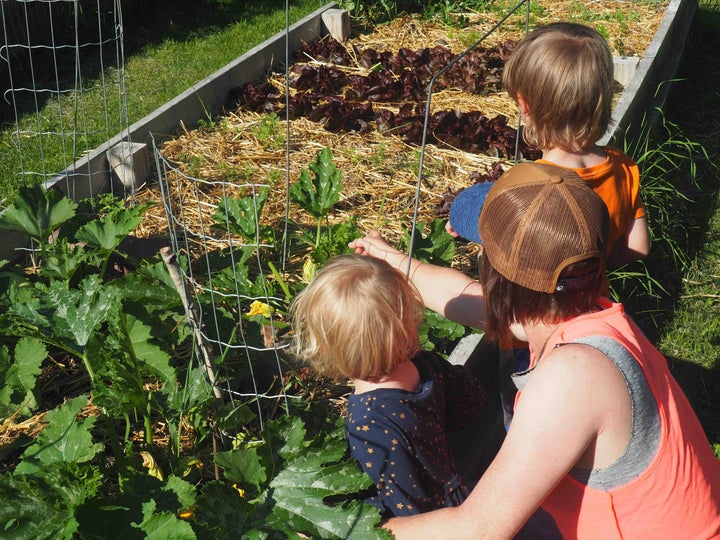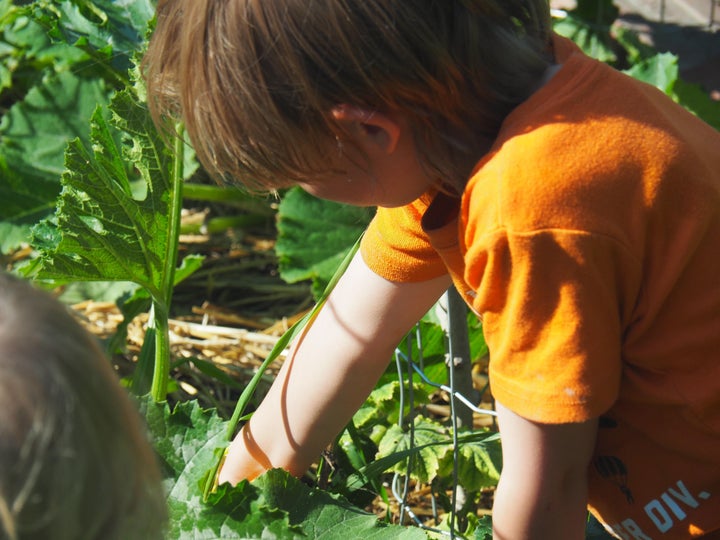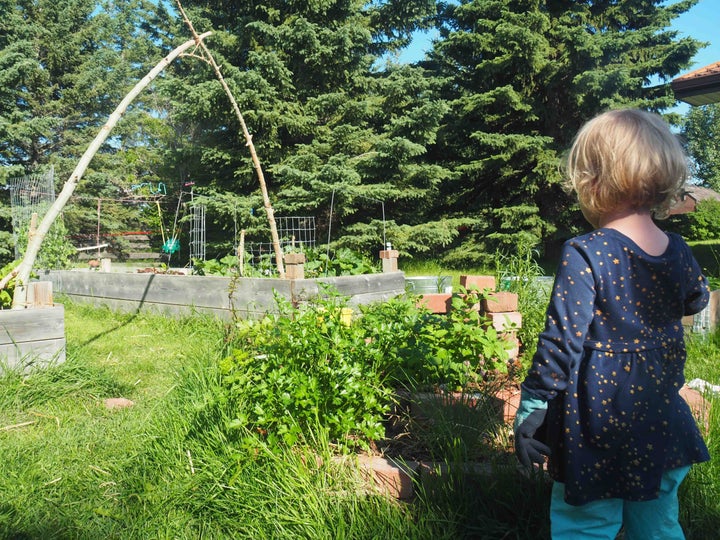As my kids and I walked around a community garden the other week, I asked them what veggies they could identify.
We’re in Alberta, where many plants are still in their early stages — I wasn’t optimistic about what they’d be able to name by leaves alone. But they made me prouder than if they’d just explained quantum physics: “Beets! Potatoes! Zucchini! Carrots!”
All the time we’re spending in our home garden is actually sinking in.
My partner is a health-care worker, so through the COVID-19 pandemic I’ve been holding down the home-front on our mini acreage. Although I’ve been gardening for years, 2020 feels different. Spending time in the garden has helped me with my own well-being at a trying time, and given me new ways to connect with my kids when I’m running out of steam. They still don’t eat kale, but at least they now see the magic in helping it grow.

Here are some ideas for parents who want to tend to both the garden and their families.
More cheer, less chore
My gardens are wild, full of life, and a bit messy. Honestly, the same goes for my kids — and I don’t expect perfection from either. Unless you’re relying on your yield for money or sustenance, it’s a good idea (for both your sanity and your kids’) to keep gardening as low-stakes as possible.
Drawing on ample research, Lucy Jones, author of Losing Eden: Why Our Minds Need the Wild, writes in the Guardian that “time spent in nature is linked to lower stress, restored attention, a balanced nervous system.” To get these benefits, we have to simply be in the garden.
Garden vs. gardening: My kids say they “love the garden” but “don’t like gardening” — I think they mean they don’t like the chores. If I have some weeding or potting to do, I’ll also have some diversions for them, which can be as simple as “find these 10 rocks” or “soak this plot with your water gun.”
Make a “sit-spot”: Creating a cozy corner of the yard for each family member (yes, parents too!) can encourage connection to nature, self-reflection, and emotional regulation. Here’s an article from Wilderness Awareness School on how to create a local sit-spot.
Get them involved from starting to saving
Getting the kids in on every stage of the process can be empowering and fun, even if all you have is a few containers on a balcony. “Gardening allows us to spend free, unscheduled outdoors time with our kids,” writes journalist and author Shannon Brescher Shea in her book Growing Sustainable Together. “Let your kids lead the way. Invite them to participate in every step, from planting to harvesting, but don’t force it.”

Starting out: My kids and I chose seeds together, and they helped me colour-code the garden plan (rainbow, obviously); they’re now watching with awe as it all springs from the page to our property.
Seed-saving: Saving the seeds from this year’s blooms can be crafty and fun for younger kids, or geeky and interesting for older ones. KidsGardening has created a great resource to help you out with this.
Documenting the process: Keeping a garden journal, either as individuals or a family, can be great for youth from preschoolers to teens.
A place of their own
Occupational therapist Amy Wagenfeld and landscape architect Daniel Winterbottom point out in their book Therapeutic Gardens: Design for Healing Spaces that when people are “deprived of a sense of free agency and control, a garden that offers them choices and levels of accessibility supports their engagement and confidence.”
When we’re feeling powerless, spending time in a garden built around our wishes can make a world of difference.

Personalized plants: Great for all ages, give each kid their own pot or plot and let them pick a few seeds or seedlings to start. Here’s a list of super-fun plants for kids (remember to check zone and growing conditions).
Experimenting with nature: Getting your kids to test their own soil quality can be really empowering. One method is to put soil in a jar, let it settle, and analyze the layers, and this year my kids helped me with it. This process can be made super-simple or scaled up, and is described in this Clemson University resource.
Use it or lose it
One of the best things about gardens is the food, but frankly, my kids are not going to be shoving beet greens into their mouths any time soon. Finding uses for garden goods that go beyond food-production can spark interest and supply you with some useful products.
Herb magic: My kids like pillaging the herb spiral for lemon balm to use as insect repellent, chocolate mint for tea, and parsley for cleaning products.

Side hustle: Older kids might enjoy making the same kinds of products and setting up a neighbourhood market stand (health precautions permitting), or bringing them around to friends. The blog Hello Glow features a nice starter list of useful creations.
When asked what their favourite parts of the garden were, my three-year-old answered, “I like wearing the gloves,” and my five-year-old said, “I like digging in the dirt.” I just love spending time among the growing things, both plant and human. At a time when injustice, hardship, and worry abound, our gardens can become sources of calm and connection.
Also on HuffPost: